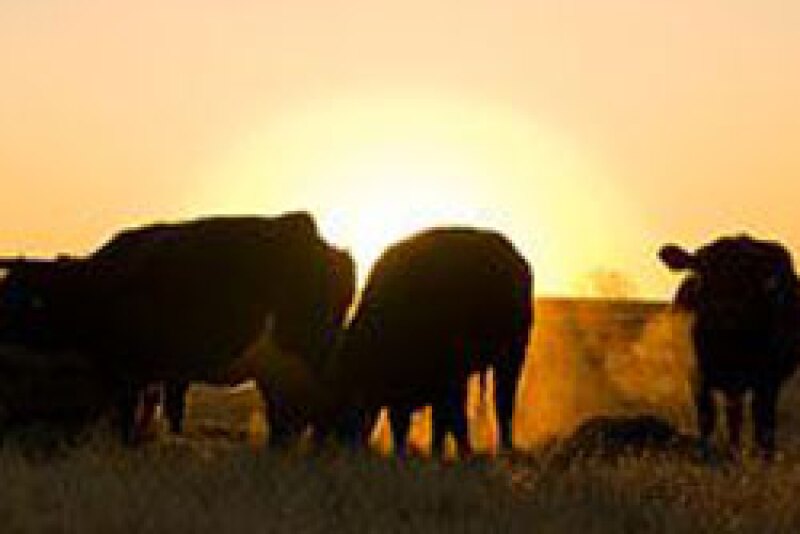Check our advice monitor on ProFarmer.com for updates to our marketing plan.
USDA’s NASS Cattle on Feed Report lends a bullish read… USDA’s Cattle on Feed Report showed cattle and calves on feed on large feedlots (greater than 1,000 head) totaled 11.1 million head on July 1, 2025, down 2% from year-ago. That included 6.88 million steers and steer calves, up 1% from last year and accounted for 62% of the total inventory. Heifers and heifer calves accounted for 42.4 million head, down 5% from 2024.
Placements in feedlots during June 1 totaled 1.44 million head, down 8% from 2024. Net placements were 1.39 million head. During June, placements of cattle and calves weighing less than 600 pounds were 320,000 head, 600-699 pounds were 235,000 head, 700-799 pounds were 315,000 head, 800-899 pounds were 326,00 head. 900-999 pounds were 165,000 head and 1,000 pounds and greater were 80,000 head.
Marketings of fed cattle during June totaled 1.71 million head, 4% below year-ago. Marketings were lowest for June since the series began 1996.
Other disappearance totaled 53,000 head during June, 7% below 2024.
Highlights from USDA’s Cold Storage Report… USDA estimated there were 839.4 million lbs. of red meat in frozen meat stocks at the end of June 30, down 39.2 million lbs. from May and 59.3 million lbs. below last year.
Beef stocks totaled 395.7 million lbs., down 12.1 million lbs. from March and was above the five-year average decline of 8.1 million lbs. Beef inventories declined 3.7 million lbs., from last year and 35.8 million lbs. from the five-year average.
Pork stocks totaled 422.3 million lbs., down 28.5 million lbs. from May. That was more than the five-year average decline of 16.9 million lbs. Pork stocks declined 52.7 million lbs. from June 2024 and were 59.0 million lbs. below the five-year average.
Poultry stocks stood at 765.8 million lbs., including 227.1 million lbs. of chicken breasts.
Private exporters reported the following daily sales activity:
- 102,870 metric tons of corn for delivery to Mexico during the 2025/2026 marketing year
- 140,000 metric tons of corn for delivery to South Korea during the 2025/2026 marketing year
- 142,500 metric tons of soybeans for delivery to Mexico during the 2025/2026 marketing year
Ag Secretary Brooke Rollins announced a new reorganization plan for the USDA. The plan refocuses its core operations to better align with its founding mission of supporting U.S. farming, ranching, and forestry. The Secretary told AgriTalk yesterday USDA has developed a phased in plan to relocate much of its agency headquarters and staff out of the Washington, D.C. area to better serve agriculture. The five hub locations will be Raleigh, North Carolina; Kansas City, Missouri; Indianapolis, Indiana; Fort Collins, Colorado; and Salt Lake City, Utah.
The Environmental Protection Agency is proposing to re-register Dicamba herbicide for over-the-top application on cotton and soybeans. The agency also said it plans to impose new mitigation requirements for the herbicide to address ecological impacts. The Center for Biological Diversity, which has challenged past registrations, immediately criticized the agency’s decision to move forward with the registration.
We featured this earlier this morning but we believe it bears repeating… The National Weather Service says a slow- moving front will produce thunderstorm activity from the central Plains to the northeast, “within a moisture-rich environment today (Friday). Storms occurring over relatively saturated soils may pose a flash flooding threat, which is why a slight risk of excessive rainfall is in effect for portions of eastern Kansas, northern Missouri, southern Iowa, Illinois and Indiana.” Unusual heat and humidity remain in place from the Middle Mississippi/Ohio Valleys through early next week, while building across the Southeast and Mid-South this weekend. Heat will be most persistent and dangerous across the Southeast and Tennessee Valley. These conditions will likely create livestock stress. “Heat will reach levels that would affect anyone without sufficient cooling and/or adequate hydration, particularly across the Southeast,” said the NWS. This includes high temperatures in the upper-90s to near 100 degrees, with heat indices potentially exceeding 110-115 degrees. “This will be a long duration heat wave, with little to no overnight relief and high humidity levels, leading to an increased danger.”

